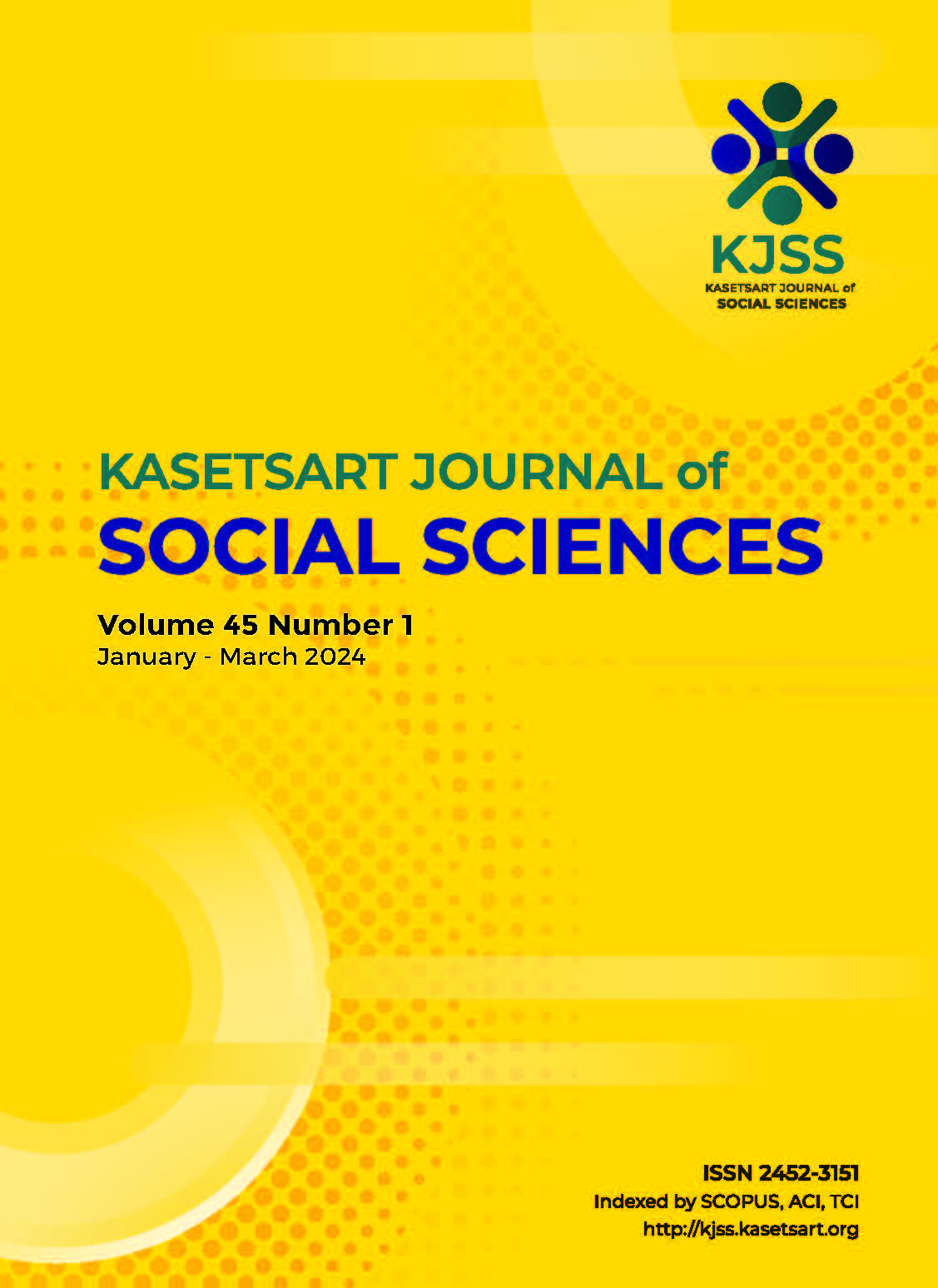Wealth distribution, income distribution, social class and education of household heads: Evidence from Thailand’s national household survey
Keywords:
education, household asset component, income inequality, socio-economic class, wealth inequalityAbstract
This study empirically investigates income and wealth distributions in Thailand using the 2021 Household Socio-Economic Survey in which the National Statistical Office (NSO, 2021) collected information in all 77 provinces and in both urban and rural areas. This research has two objectives. First, it examines income and wealth inequality by social classes, residential location, and educational attainment of household heads. Second, it analyses the influence of educational attainment of household heads and social class on ability to earn income and ability to accumulate household wealth. Descriptive statistics and instrumental variable analysis are employed in the study. As projected by the life-cycle model, this research finds that wealth possession tends to increase by age of household heads, illustrating a hump-shaped graph called the Kuznets Curve. Overall, income and wealth distributions vary by social class, residential location, and education of household head. More specifically, urban households accumulate more wealth than their rural counterparts. The head of the household obtaining more education builds up more wealth than their less educated counterparts. This indicates a positive contribution of educational level to earnings and wealth in the long run. We suggest the Thai government to employ more poverty targeting approaches like the Equitable Education Fund (EEF) that boost financial support for about 600,000 students who fall in the category of “very poor,” so they have opportunity to accumulate wealth, become less vulnerable during uncertain times, and are protected from the progression of intergenerational inequality.
Downloads
Published
How to Cite
Issue
Section
License

This work is licensed under a Creative Commons Attribution-NonCommercial-NoDerivatives 4.0 International License.
This is an open access article under the CC BY-NC-ND license http://creativecommons.org/licenses/by-nc-nd/4.0/










